Where to see Grand Canyon in Ukraine: Places you will want to return to
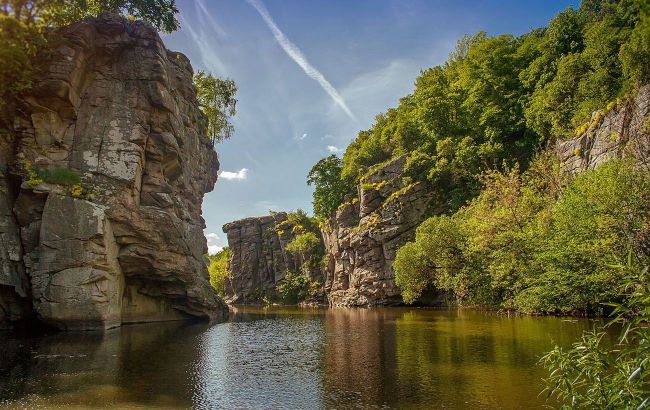 The most beautiful canyons in Ukraine to visit this summer (photo: Wikipedia)
The most beautiful canyons in Ukraine to visit this summer (photo: Wikipedia)
There are places in Ukraine where nature looks like a scene from an epic movie. Granite cliffs, waterfalls, deep gorges, and rivers winding through steep ravines — this isn’t Colorado, it’s our Ukrainian canyons. Here’s where to find the most picturesque canyons, what to know before you go, and whether you can camp overnight.
Buky Canyon, Cherkasy Oblast
Location: Village of Buky, Mankivka region, Cherkasy Oblast.
History and legends: In the 19th century, a watermill operated here — its remnants are still visible among the cliffs. Local legends tell of a “chasm” that swallows the Tikych River into a whirlpool.
What to see: The Vyr waterfall, ruins of the old mill, a narrow passage between cliffs, granite outcrops, and riverside trails.
Overnight stay: You can stay in local guesthouses or camp in designated areas. Tourist infrastructure is minimal, but camping is possible.
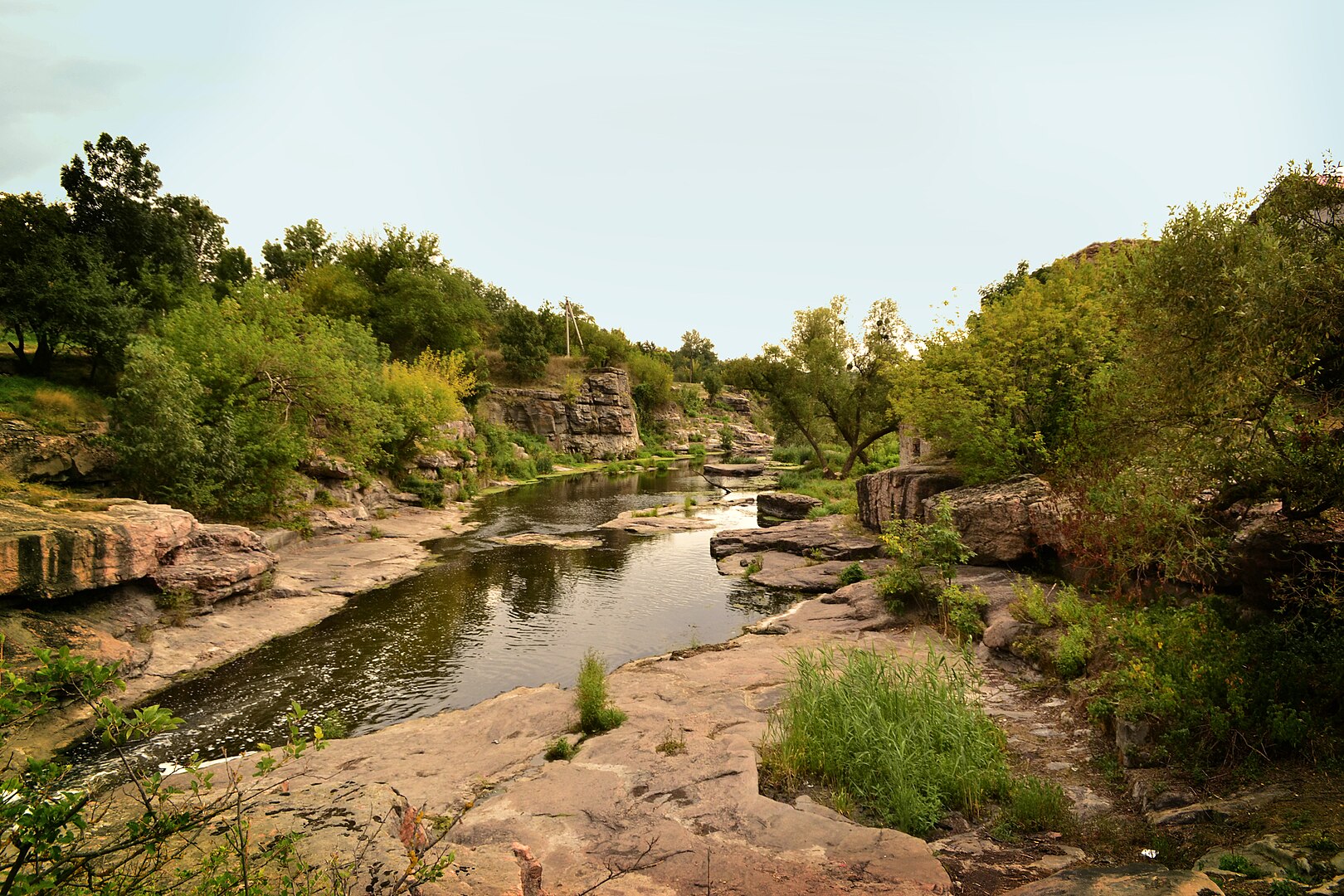
Buky Canyon (photo: Wikipedia)
Dniester Canyon, Ternopil Oblast
Location: Covers parts of Ternopil, Ivano-Frankivsk, Chernivtsi, and Khmelnytskyi oblasts.
History and myths: Formed millions of years ago, and included in the list of Ukraine’s Seven Natural Wonders.
What to see: Verteba Cave, Bakota Bay, cliff monasteries, villages with ancient churches.
Overnight stay: You can stay in private homestays, campgrounds, or pitch a tent (with permission from locals). Rafting tours with overnight stays are common.
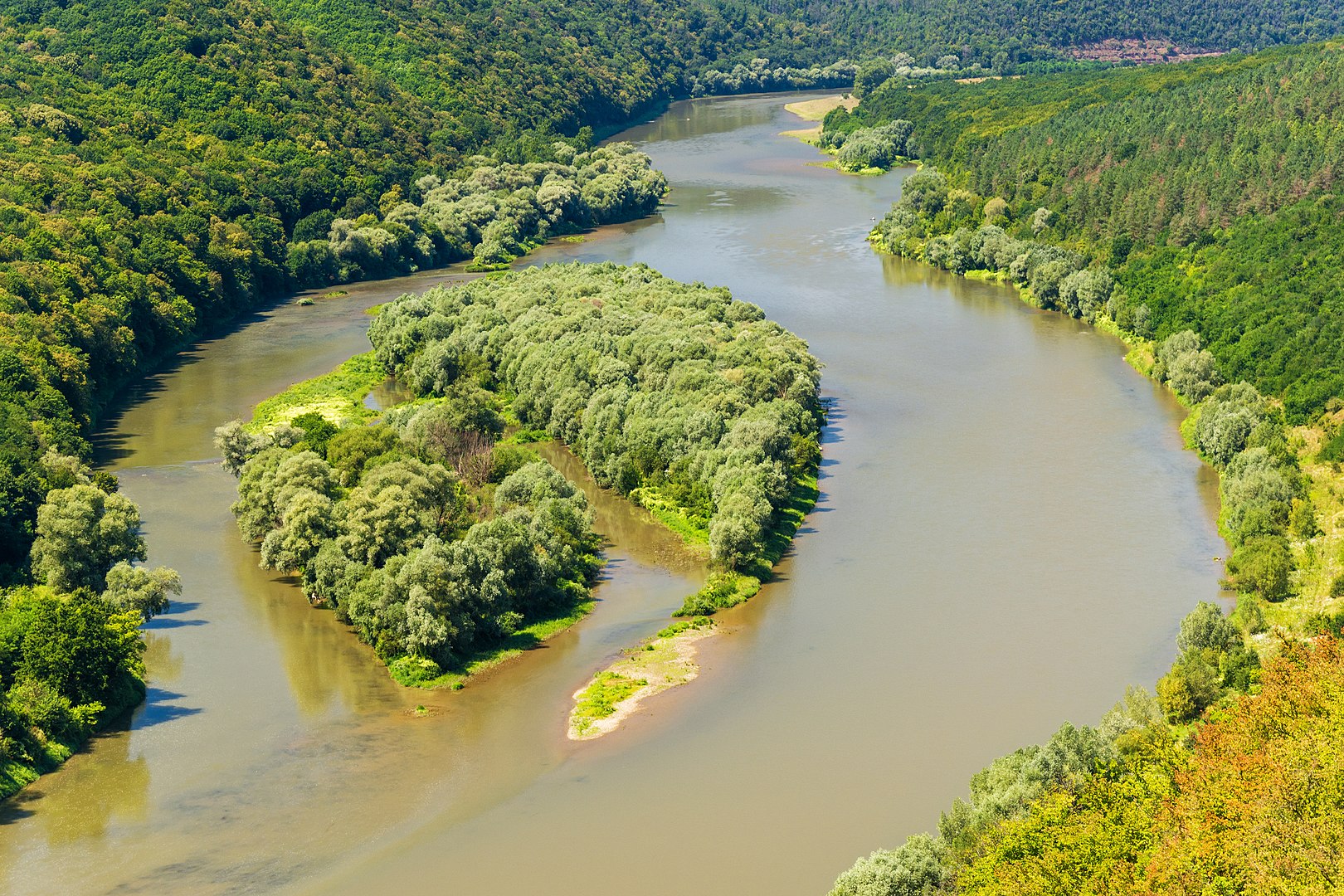 Dniester Canyon, Yin-Yang Island (photo: Wikipedia)
Dniester Canyon, Yin-Yang Island (photo: Wikipedia)
Smotrych Canyon, Kamianets-Podilskyi
Location: Right in the center of Kamianets-Podilskyi, near the Old Fortress.
History and myths: A natural fortress that, once, was used as a defensive stronghold.
What to see: Views of the fortress, waterfalls, the Pretorian Bridge, and walks along the cliffs.
Overnight stay: Hotels and hostels are available in the city. Wild camping is not suitable, but there are designated camping areas nearby.
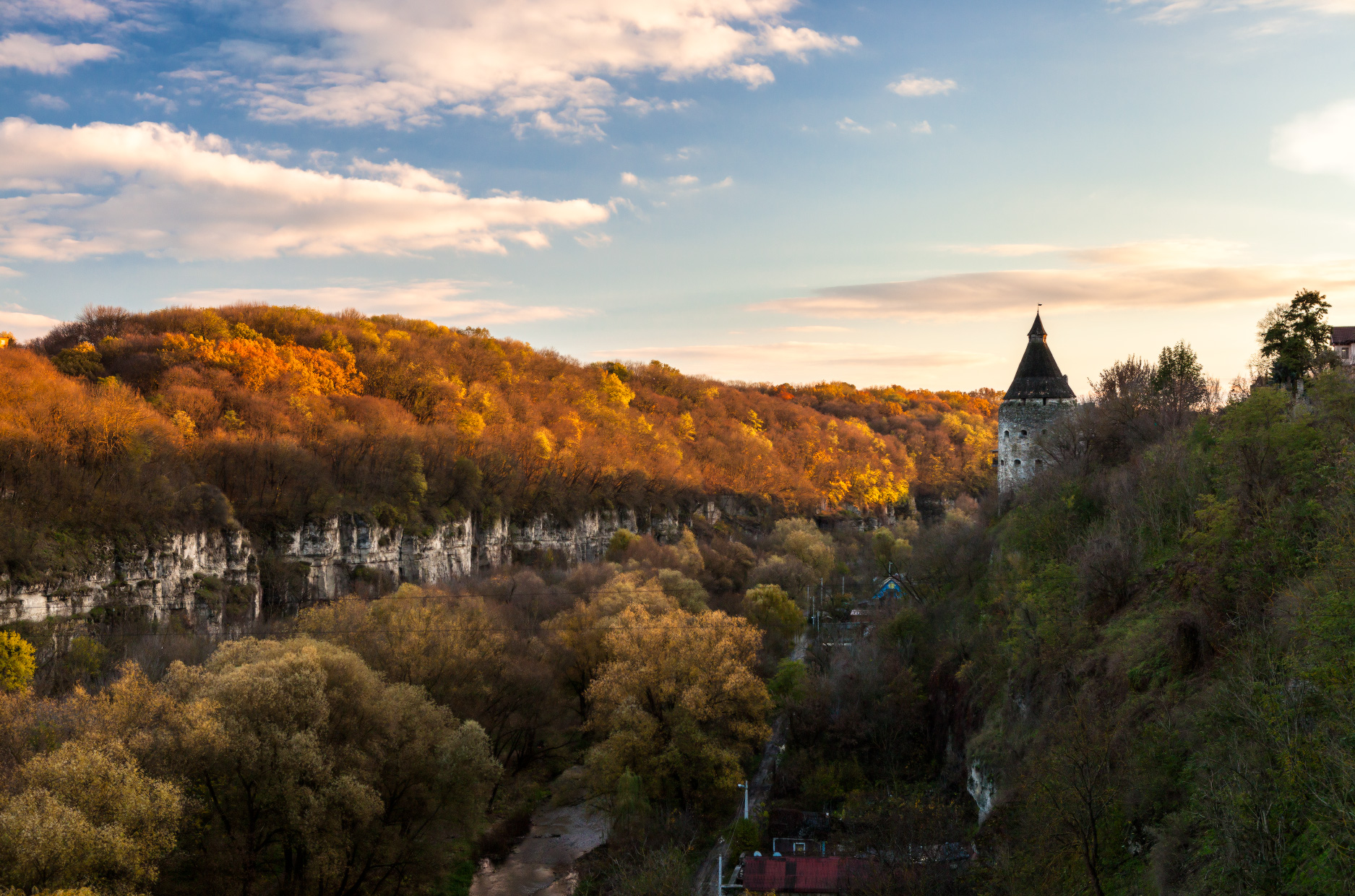 Smotrych Canyon (photo: Wikipedia)
Smotrych Canyon (photo: Wikipedia)
Teteriv Canyon, Zhytomyr Oblast
Location: Near the village of Denyshi, close to Zhytomyr.
History and myths: Legend says the canyon was formed by a lightning strike that split the rocks.
What to see: Granite cliffs, pine forests, trekking paths, and rock climbing routes.
Overnight stay: You can set up tents near the rocks. There are a few camping areas. Minimal infrastructure, but maximum peace and silence.
Chemehivskyi Canyon, Ivano-Frankivsk Oblast
Location: On the outskirts of the village of Mykulychyn, Ivano-Frankivsk Oblast. The best way to start is from the village center, following Kosmonavtiv Street along the river.
This is one of the lesser-known, but incredibly beautiful, spots in the Carpathians. The cliffs, gorges, and the clear Prulets-Chemehivskyi River create the feeling of a wild mountain wilderness untouched by civilization.
History and myths: A narrow-gauge railway used to run here — you can still see remains in the form of concrete supports and embankments. Local stories say fugitives and rebels once hid in these gorges. The natural environment has been preserved due to the area’s remoteness and rugged terrain.
What to see: Rock outcrops, natural pools in the riverbed, and narrow gorges. During spring and summer, the river becomes especially full and bright blue. Perfect for hiking and wild ecotourism.
Overnight and camping: You can set up a tent in the river valley. There’s almost no tourist infrastructure, so bring all your essentials. Camping is possible only in full autonomy, with respect for nature, and by following mountain safety rules.
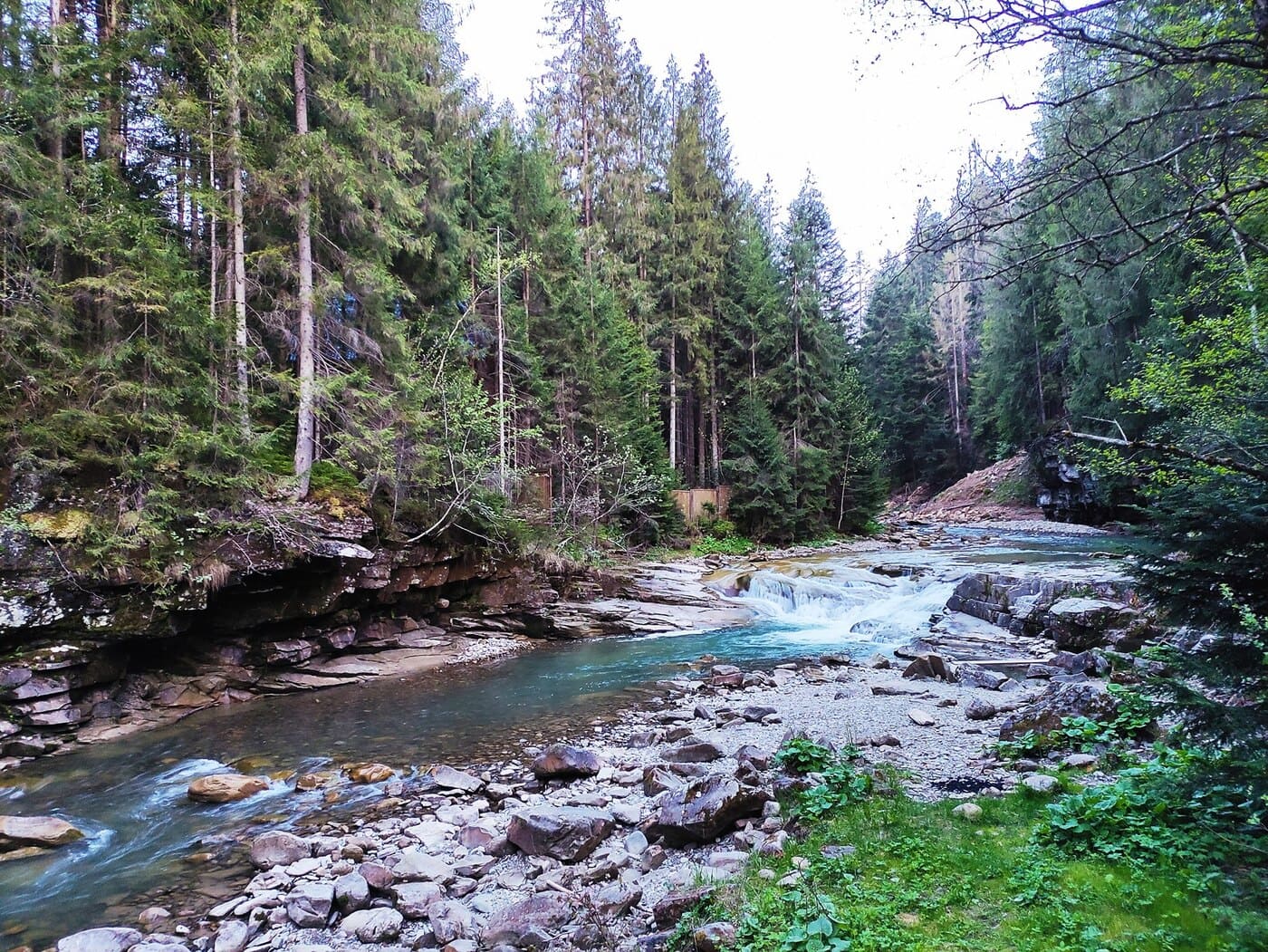 Chemegivskyi Canyon (photo: Wikipedia)
Chemegivskyi Canyon (photo: Wikipedia)
Southern Buh near the village of Myhiia, Mykolaiv Oblast
Location: Village of Myhiia, Pervomaiskyi region, Mykolaiv Oblast (northern part).
History and myths: Part of the Granite-Steppe Buh — a unique natural complex.
What to see: Rapids, cliffs, rafting spots, green riverbanks, a radon lake. Many activities and rafting tours are available.
Overnight stay: There are campgrounds and holiday resorts. Wild camping is allowed if you follow the rules.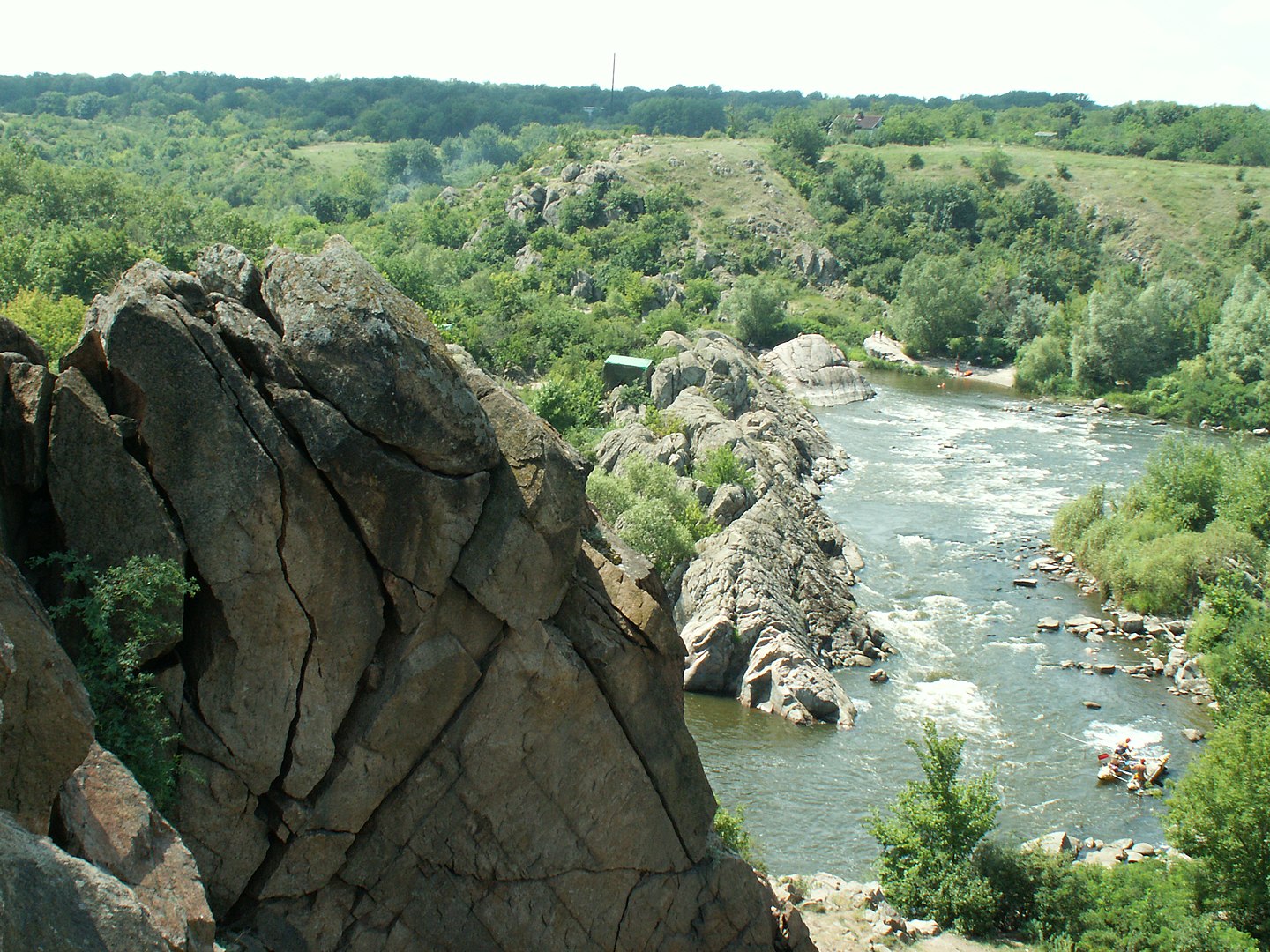 Myhiya (photo: Wikipedia)
Myhiya (photo: Wikipedia)
Earlier, we explained how tourists can skip lines at the world’s most famous landmarks — the Taj Mahal, the Colosseum, and Versailles.
Sources: Wikipedia, Ukrainian Nature Conservation Group (uncg.org.ua), National Nature Park "Buzkyi Gard", ResearchGate

